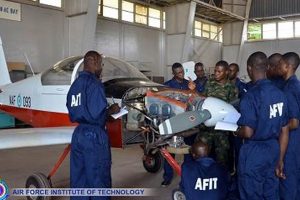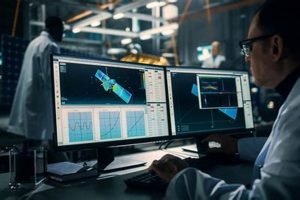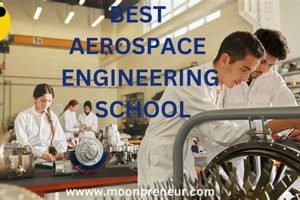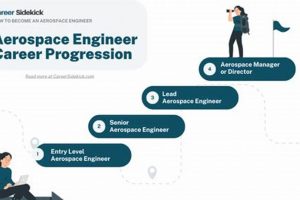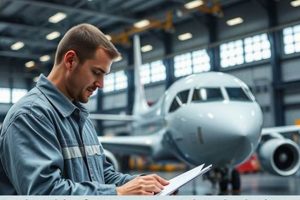The field concerned with the design, development, testing, and production of aircraft and spacecraft encompasses a broad spectrum of specializations. These specializations address the complexities of flight within and beyond Earth’s atmosphere, dealing with principles of aerodynamics, propulsion, materials science, and control systems. Examples include the development of more fuel-efficient jet engines and the design of spacecraft capable of withstanding extreme conditions during space travel.
Expertise in this field is crucial for advancing air travel, space exploration, and national security. The resulting innovations drive economic growth, facilitate scientific discovery, and enable global connectivity. Historically, progress in aviation and astronautics has been intertwined with significant technological breakthroughs and a deeper understanding of the physical universe.
The following sections will delve into the various sub-disciplines, focusing on the diverse areas of expertise needed to meet the challenges of designing, building, and operating vehicles for both atmospheric and space environments.
A career in aerospace demands specialized knowledge. Careful planning is essential when selecting a focus area within the field. Consider the following recommendations for navigating the choices effectively:
Tip 1: Assess Foundational Knowledge: A strong grasp of mathematics and physics is paramount. Solid understanding in these areas prepares individuals for the complex theoretical underpinnings of disciplines such as aerodynamics and orbital mechanics.
Tip 2: Research Specific Disciplines: Investigate the array of potential paths, including aerodynamics, propulsion, structures, control systems, and avionics. Understand the responsibilities, skill sets, and challenges associated with each.
Tip 3: Explore Interdisciplinary Connections: Many aerospace projects demand collaboration across specialties. For example, designing an efficient aircraft requires close coordination between aerodynamicists, propulsion engineers, and structural engineers.
Tip 4: Consider Career Goals: Determine long-term professional aspirations. Individuals interested in designing new aircraft may concentrate on aerodynamics and aircraft design. Those focused on space exploration may prioritize propulsion and spacecraft systems.
Tip 5: Seek Practical Experience: Internships, research projects, and participation in student engineering competitions offer valuable hands-on experience. These opportunities provide exposure to real-world challenges and solidify theoretical knowledge.
Tip 6: Analyze Evolving Industry Trends: The aerospace sector is continually evolving. Emerging areas such as sustainable aviation, autonomous flight, and space tourism offer new opportunities and require specialized skills.
Tip 7: Develop Computational Skills: Proficiency in relevant software tools is essential. Familiarity with CAD software, simulation packages, and programming languages enhances problem-solving capabilities and facilitates design and analysis.
In conclusion, selecting a specialization requires a thorough understanding of both personal strengths and industry demands. Thoughtful planning and continuous learning are crucial for a successful and fulfilling career.
The next section will provide a detailed overview of the specific sectors within the field, offering in-depth insight into their defining characteristics and future prospects.
1. Aerodynamics
Aerodynamics, a foundational discipline, is inextricably linked to the various subfields within aerospace engineering. The study of how air interacts with moving objects directly dictates aircraft design, performance capabilities, and overall efficiency. An aircraft’s wing shape, for instance, is a direct consequence of aerodynamic principles aimed at maximizing lift and minimizing drag. Variations in aerodynamic requirements are evident across different types of aircraft. High-speed jet aircraft necessitate designs that mitigate the effects of compressibility, while low-speed aircraft, such as drones, prioritize high-lift configurations.
The design of propulsion systems is also intimately tied to aerodynamics. The efficiency of an engine’s intake and exhaust systems depends heavily on aerodynamic considerations to minimize losses and maximize thrust. Furthermore, the structural integrity of an aircraft is affected by aerodynamic forces. Understanding these forces is crucial for designing structures that can withstand the stresses encountered during flight. Control systems rely on aerodynamic surfaces, such as ailerons and rudders, to maneuver the aircraft; their effectiveness is directly dependent on aerodynamic characteristics. In spacecraft design, while aerodynamics plays a lesser role in orbit, it is critical during atmospheric entry and landing phases. The shape of a spacecraft’s heat shield, for example, is designed based on aerodynamic principles to manage extreme heating.
In summary, proficiency in aerodynamics is essential across the landscape of aerospace engineering. Whether optimizing the shape of a wing, designing an efficient engine intake, or ensuring structural integrity under flight loads, a deep understanding of aerodynamic principles is vital for achieving desired performance and safety. Addressing challenges in areas such as supersonic flight and hypersonic vehicle design requires constant innovation in aerodynamic theory and experimentation.
2. Propulsion Systems
Propulsion systems are fundamental to the performance and functionality of any aerospace vehicle, serving as the driving force behind their ability to navigate both atmospheric and extraterrestrial environments. The integration of appropriate propulsion technology is a critical consideration in the design and operation of different types of aerospace engineering projects.
- Gas Turbine Engines for Atmospheric Flight
Gas turbine engines, including turbojets, turbofans, and turboprops, are essential for conventional aircraft. They generate thrust by compressing air, mixing it with fuel, igniting the mixture, and expelling hot exhaust gases. The design parameters are tightly linked to the specific aircraft type. For instance, turbofans are favored for commercial airliners due to their efficiency at subsonic speeds, while turbojets are more suited for high-speed military aircraft. Advancements in materials and aerodynamics continue to improve the efficiency and thrust-to-weight ratio of these engines.
- Rocket Engines for Spaceflight
Rocket engines are the primary means of propulsion for spacecraft, operating on the principle of expelling mass at high velocity to generate thrust. These engines can utilize solid, liquid, or hybrid propellants. Solid rocket motors offer simplicity and high thrust but lack throttling capabilities. Liquid rocket engines provide higher performance and allow for thrust modulation, essential for orbital maneuvers. The selection of a rocket engine depends on mission requirements, considering factors such as thrust, specific impulse, and propellant storage.
- Electric Propulsion for Spacecraft
Electric propulsion systems, such as ion thrusters and Hall-effect thrusters, use electrical energy to accelerate propellant ions, generating thrust. While offering lower thrust levels compared to chemical rockets, electric propulsion provides significantly higher specific impulse, resulting in greater propellant efficiency and enabling long-duration missions. These systems are particularly suited for interplanetary travel, station-keeping, and orbit adjustment.
- Future Propulsion Concepts
Ongoing research explores advanced propulsion concepts, including hypersonic propulsion systems like scramjets, which could enable atmospheric flight at speeds exceeding Mach 5. Other concepts include nuclear propulsion and beamed energy propulsion, which could revolutionize space travel. These technologies represent significant departures from conventional propulsion methods and hold the potential to dramatically alter the landscape of aerospace engineering.
In summary, the selection and design of propulsion systems are integral to the success of any aerospace endeavor. From the gas turbine engines powering commercial airliners to the rocket engines propelling spacecraft, propulsion technology is central to enabling air and space travel. Furthermore, continued development and implementation of future propulsion concepts are poised to shape the future of different types of aerospace engineering.
3. Structures
The structural integrity of aerospace vehicles is paramount, directly influencing safety, performance, and mission success. Structural engineering in this context involves designing and analyzing airframes and spacecraft bodies to withstand various stresses encountered during flight and operation. These stresses arise from aerodynamic forces, gravitational loads, thermal gradients, and internal pressures, demanding a comprehensive understanding of material properties, stress analysis techniques, and structural design principles. The field applies to “different types of aerospace engineering” by tailoring structural solutions to meet the unique demands of each application. For example, a commercial airliner’s wing structure must endure millions of flight cycles, necessitating fatigue-resistant materials and robust design methodologies. Spacecraft structures, conversely, face extreme temperature variations and vacuum conditions, requiring materials with high thermal stability and specialized joining techniques.
Advanced composite materials, such as carbon fiber reinforced polymers, are increasingly employed in aerospace structures due to their high strength-to-weight ratio. These materials allow for lighter and more efficient designs, improving fuel economy and payload capacity. Finite element analysis (FEA) is a crucial tool in structural analysis, enabling engineers to simulate complex loading scenarios and identify potential failure points. For instance, FEA can predict the stress distribution in a spacecraft’s solar panel array during deployment, ensuring it can withstand the dynamic loads. Furthermore, non-destructive testing methods, such as ultrasonic inspection and X-ray radiography, are vital for detecting defects and ensuring the structural health of aerospace components throughout their service life. The development and implementation of novel structural concepts, such as morphing wings and self-healing materials, represent ongoing advancements in the field.
In summary, structural engineering is a critical discipline in aerospace, ensuring the safety and reliability of aircraft and spacecraft. Tailoring structural solutions to the specific operational environment is crucial for achieving optimal performance and mission success. Ongoing research and development in materials, analysis techniques, and structural concepts continue to push the boundaries of aerospace engineering, enabling the design and construction of increasingly complex and capable vehicles.
4. Control Systems
Control systems are integral to the safe and efficient operation of aerospace vehicles, exerting precise command over their trajectory, stability, and overall performance. Their application varies significantly across different aerospace engineering domains, from the stabilization of commercial aircraft to the autonomous navigation of spacecraft. The effectiveness of these systems directly impacts a vehicle’s ability to execute its intended mission and withstand environmental disturbances. For instance, a flight control system in an airliner counteracts turbulence, ensuring passenger comfort and maintaining the prescribed flight path. Similarly, attitude control systems in satellites maintain the precise orientation necessary for communication and observation purposes. The absence or malfunction of these systems can lead to catastrophic consequences, underscoring their criticality.
The design of control systems requires a deep understanding of feedback control theory, system dynamics, and sensor technology. Modern aerospace control systems often employ sophisticated algorithms and sensors, including inertial measurement units (IMUs), GPS receivers, and optical sensors, to provide accurate state estimation and control inputs. Adaptive control techniques are increasingly used to compensate for uncertainties and variations in vehicle dynamics, improving robustness and performance. Examples include flight controllers that adjust control surfaces in real-time to optimize fuel efficiency or spacecraft controllers that compensate for variations in solar radiation pressure. The evolution of control systems has enabled increasingly complex and autonomous aerospace missions, such as unmanned aerial vehicles (UAVs) and interplanetary probes.
In summary, control systems are indispensable components of aerospace engineering, enabling the precise and reliable operation of vehicles in diverse environments. Their design and implementation demand a multidisciplinary approach, integrating principles from control theory, dynamics, and sensor technology. Continued advancements in control algorithms and sensor capabilities promise to further enhance the autonomy and performance of aerospace systems, expanding the boundaries of air and space exploration.
5. Avionics
Avionics, a portmanteau of aviation and electronics, represents the electronic systems essential for operating aircraft and spacecraft. The discipline integrates a diverse set of technologies, including communication, navigation, flight control, and electronic warfare systems, which collectively enable safe and efficient operation across the spectrum of aerospace vehicles. Its role is inextricably linked to “different types of aerospace engineering”, with its applications tailored to the specific demands and operational environments of each.
- Communication Systems
Avionics-based communication systems facilitate critical information exchange between pilots, air traffic control, and ground stations. These systems employ radio communication, satellite communication, and data links to transmit voice and data, ensuring situational awareness and coordination. Commercial airliners rely on VHF radios for short-range communication and satellite links for long-range connectivity, while military aircraft utilize secure communication channels to transmit classified information. In spacecraft, communication systems enable telemetry data transmission, command reception, and scientific data relay, linking spacecraft to mission control centers on Earth.
- Navigation Systems
Navigation systems provide accurate position, velocity, and attitude information, enabling pilots and spacecraft operators to navigate precisely. Inertial navigation systems (INS) use accelerometers and gyroscopes to track vehicle motion, while global positioning systems (GPS) leverage satellite signals to determine location. Aircraft use a combination of INS and GPS for accurate navigation, while spacecraft rely on star trackers and sun sensors for attitude determination. Autonomous navigation systems are becoming increasingly prevalent, enabling unmanned aerial vehicles (UAVs) and spacecraft to navigate without human intervention.
- Flight Control Systems
Flight control systems govern the stability and maneuverability of aircraft, translating pilot inputs into control surface deflections. Fly-by-wire systems replace mechanical linkages with electronic signals, enhancing responsiveness and reducing pilot workload. Autopilots automate flight tasks, such as altitude hold and heading control, improving safety and efficiency. Modern flight control systems incorporate advanced algorithms, such as model predictive control, to optimize performance and mitigate turbulence effects. Spacecraft employ attitude control systems, using reaction wheels and thrusters, to maintain the desired orientation in space.
- Electronic Warfare Systems
Electronic warfare systems provide defensive and offensive capabilities, protecting aircraft from electronic threats and disrupting enemy communications. Radar warning receivers detect and identify enemy radar signals, while electronic countermeasures jam or spoof enemy radars. Military aircraft use electronic warfare systems to suppress enemy air defenses and protect themselves from missile attacks. These systems are constantly evolving to counter new threats and maintain a technological advantage. Space-based electronic warfare systems are also being developed to protect satellites from interference and cyberattacks.
In conclusion, avionics plays a crucial role in modern aerospace, enabling safe, efficient, and effective operation across various types of vehicles and missions. The integration of communication, navigation, flight control, and electronic warfare systems is essential for achieving mission objectives and maintaining a technological edge. Continued advancements in avionics technology promise to further enhance the capabilities and autonomy of aerospace systems, driving innovation in both civilian and military applications.
6. Spacecraft Design
Spacecraft design is a multifaceted discipline within aerospace engineering that necessitates the integration of numerous specialized fields to create functional and reliable systems capable of operating in the harsh environment of space. As a focal point within “different types of aerospace engineering”, it embodies a synthesis of knowledge from areas such as aerodynamics (during launch and reentry), propulsion, structures, control systems, avionics, and thermal management. The effective design of spacecraft directly determines their mission capabilities, longevity, and overall success, illustrating a clear cause-and-effect relationship. For example, a robust structural design, validated through rigorous stress analysis, is critical for withstanding launch loads and preventing catastrophic failure in orbit. Similarly, advanced thermal control systems are essential for maintaining operational temperatures of sensitive electronic components, preventing overheating or freezing in the vacuum of space.
The importance of spacecraft design as a component of “different types of aerospace engineering” becomes evident when considering its role in enabling scientific discovery, communication, and national security. Earth observation satellites, designed to monitor climate change and environmental conditions, rely on sophisticated optical and radar systems, which in turn demand precise attitude control and power management. Communication satellites, vital for global connectivity, require high-gain antennas and reliable transponders, necessitating careful consideration of orbital mechanics and signal propagation. Manned spacecraft, such as the International Space Station, represent the pinnacle of aerospace engineering integration, demanding life support systems, radiation shielding, and complex docking mechanisms, all of which depend on meticulous design and rigorous testing. The practical significance of understanding the interdependencies between spacecraft design and its contributing disciplines is demonstrated by the continuous improvement in satellite performance and the expansion of human presence in space.
In conclusion, spacecraft design epitomizes the integrated nature of “different types of aerospace engineering”. The ability to successfully design and operate spacecraft requires a holistic understanding of aerodynamics, propulsion, structures, control systems, avionics, thermal management, and other related fields. Challenges remain in areas such as reducing spacecraft mass, improving reliability, and enhancing autonomy, but ongoing research and technological advancements continue to drive innovation and expand the possibilities of space exploration and utilization.
Frequently Asked Questions Regarding the Spectrum of Aerospace Engineering
The subsequent section addresses common inquiries concerning the various specializations within the aerospace engineering discipline, providing concise and informative responses.
Question 1: What distinguishes aeronautical engineering from astronautical engineering?
Aeronautical engineering focuses on the design, development, and operation of aircraft within Earth’s atmosphere. Astronautical engineering, conversely, addresses the design, development, and operation of spacecraft and related systems for use in outer space. The former deals primarily with aerodynamic forces and atmospheric conditions, while the latter confronts challenges related to vacuum, radiation, and orbital mechanics.
Question 2: Is a background in mathematics essential for a career in aerospace engineering?
A strong foundation in mathematics is crucial. Aerospace engineering relies heavily on mathematical principles for modeling, simulation, and analysis. Proficiency in calculus, differential equations, linear algebra, and statistics is expected.
Question 3: What role do computer simulations play in modern aerospace engineering?
Computer simulations are integral to modern aerospace engineering. They allow engineers to model and analyze complex systems, predict performance, and optimize designs before physical prototypes are built. Computational fluid dynamics (CFD) and finite element analysis (FEA) are examples of commonly used simulation techniques.
Question 4: What are some emerging trends within the field of aerospace engineering?
Several emerging trends are shaping the future of aerospace engineering, including sustainable aviation (focusing on fuel efficiency and alternative fuels), autonomous flight (developing unmanned aerial vehicles and autonomous systems), and space tourism (creating opportunities for commercial space travel).
Question 5: How does materials science relate to aerospace engineering?
Materials science is fundamentally linked to aerospace engineering. The selection and development of materials with specific properties (e.g., high strength-to-weight ratio, thermal resistance) are critical for the design of aircraft and spacecraft. Advanced composite materials and alloys play a central role in modern aerospace structures.
Question 6: What are some typical career paths for graduates with aerospace engineering degrees?
Graduates with aerospace engineering degrees pursue a wide range of career paths. Common options include aircraft design and manufacturing, spacecraft engineering, propulsion systems development, research and development, and government agencies (e.g., NASA, defense departments).
In summary, the diverse field of aerospace engineering presents numerous opportunities for individuals with a strong interest in science, technology, and innovation. A solid academic foundation, coupled with practical experience, is key to a successful career.
The subsequent section will provide information on professional organizations and resources for aerospace engineers.
Different Types of Aerospace Engineering
This exposition has navigated the complex landscape of diverse specializations, emphasizing their distinct characteristics and interdependencies. The disciplines of aerodynamics, propulsion, structures, control systems, avionics, and spacecraft design represent fundamental pillars, each essential for the development and operation of vehicles within both atmospheric and extraterrestrial realms. The understanding and skillful application of these engineering principles remain critical for progress.
Continued advancement within this field hinges upon ongoing innovation and a commitment to rigorous engineering practices. Future contributions will determine the trajectory of air travel, space exploration, and national security. Further investigation and dedicated effort are necessary to ensure continued leadership in this dynamic and impactful sector.



